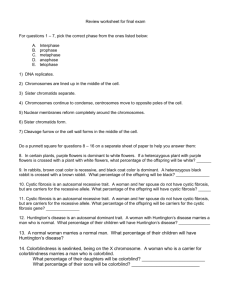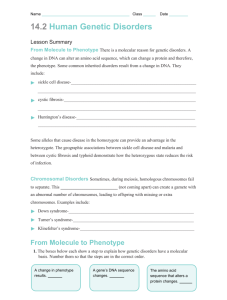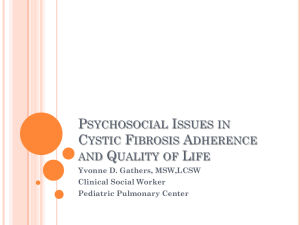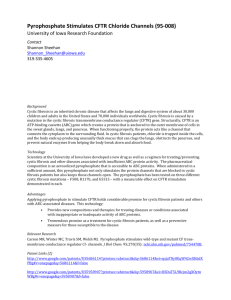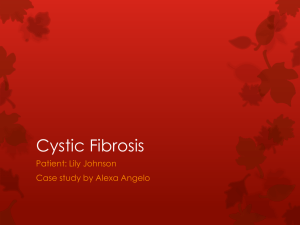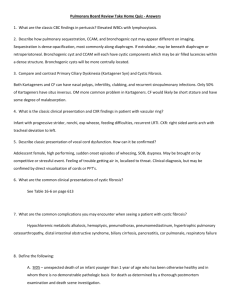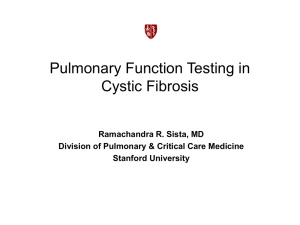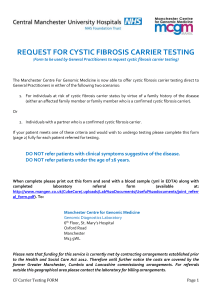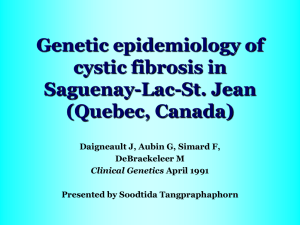You are the Counselor Worksheet
advertisement
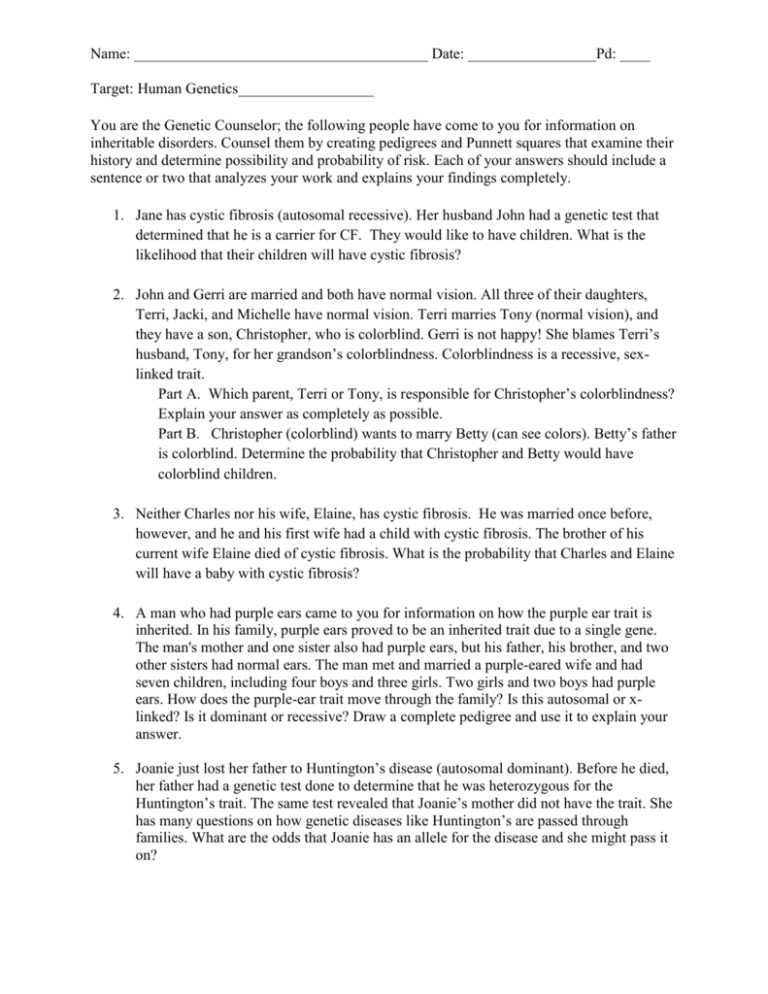
Name: _______________________________________ Date: _________________Pd: ____ Target: Human Genetics__________________ You are the Genetic Counselor; the following people have come to you for information on inheritable disorders. Counsel them by creating pedigrees and Punnett squares that examine their history and determine possibility and probability of risk. Each of your answers should include a sentence or two that analyzes your work and explains your findings completely. 1. Jane has cystic fibrosis (autosomal recessive). Her husband John had a genetic test that determined that he is a carrier for CF. They would like to have children. What is the likelihood that their children will have cystic fibrosis? 2. John and Gerri are married and both have normal vision. All three of their daughters, Terri, Jacki, and Michelle have normal vision. Terri marries Tony (normal vision), and they have a son, Christopher, who is colorblind. Gerri is not happy! She blames Terri’s husband, Tony, for her grandson’s colorblindness. Colorblindness is a recessive, sexlinked trait. Part A. Which parent, Terri or Tony, is responsible for Christopher’s colorblindness? Explain your answer as completely as possible. Part B. Christopher (colorblind) wants to marry Betty (can see colors). Betty’s father is colorblind. Determine the probability that Christopher and Betty would have colorblind children. 3. Neither Charles nor his wife, Elaine, has cystic fibrosis. He was married once before, however, and he and his first wife had a child with cystic fibrosis. The brother of his current wife Elaine died of cystic fibrosis. What is the probability that Charles and Elaine will have a baby with cystic fibrosis? 4. A man who had purple ears came to you for information on how the purple ear trait is inherited. In his family, purple ears proved to be an inherited trait due to a single gene. The man's mother and one sister also had purple ears, but his father, his brother, and two other sisters had normal ears. The man met and married a purple-eared wife and had seven children, including four boys and three girls. Two girls and two boys had purple ears. How does the purple-ear trait move through the family? Is this autosomal or xlinked? Is it dominant or recessive? Draw a complete pedigree and use it to explain your answer. 5. Joanie just lost her father to Huntington’s disease (autosomal dominant). Before he died, her father had a genetic test done to determine that he was heterozygous for the Huntington’s trait. The same test revealed that Joanie’s mother did not have the trait. She has many questions on how genetic diseases like Huntington’s are passed through families. What are the odds that Joanie has an allele for the disease and she might pass it on? Name: _______________________________________ Date: _________________Pd: ____ Target: Human Genetics__________________ 6. __________ The nucleic acid sequence in mRNA is determined by a) the order of amino acids in the protein b) nucleotide sequence in DNA c) nucleotide sequence in t-RNA d) all of the above 7. __________ If a frameshift mutation causes a stop codon to be inserted into the DNA sequence a) the resulting protein will not be affected b) the phenotype will change but not the genotype c) the resulting protein will be too short and non-functional d) the resulting protein will be too long and non-functional 8. __________ A nucleotide deletion in DNA replication a) causes one amino acid of the protein to be incorrect b) causes all of the amino acids of the protein to be incorrect c) causes the amino acids inserted after the deletion to be incorrect d) causes the amino acids inserted before the deletion to be incorrect e) has no effect on the resulting protein 9. __________ The addition of a single nucleotide to the DNA sequence causes a frameshift mutation. a) True b) False 10. __________ In a frameshift mutation all of the amino acids before the shift are changed. a) True b) False 11. A karyotype reveals that a woman is carrying a baby that has 47 chromosomes. The test reveals that the genotype of the baby is XYY. What type of mutation is this? Did the mutation occur in the sperm or the egg?
